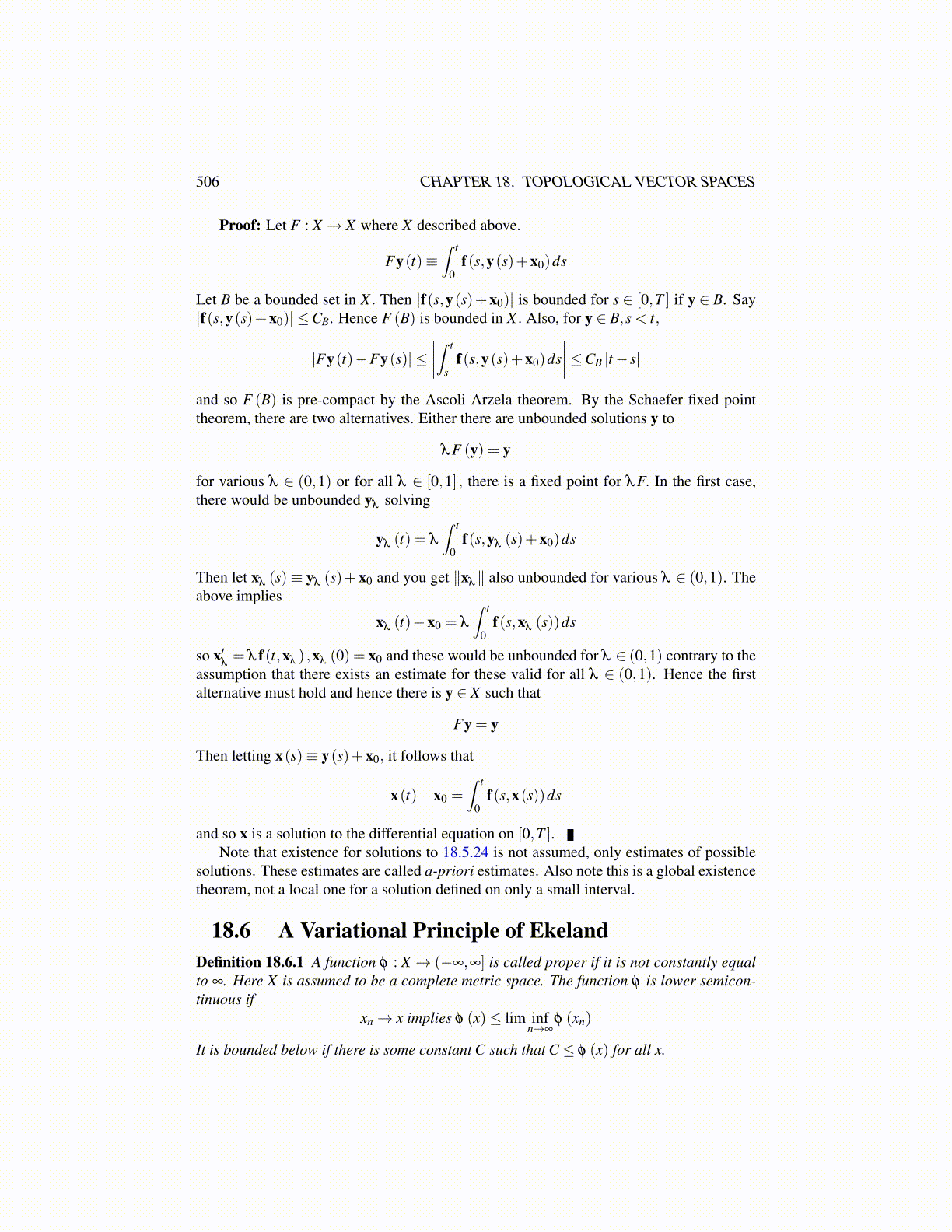
506 CHAPTER 18. TOPOLOGICAL VECTOR SPACES
Proof: Let F : X → X where X described above.
Fy(t)≡∫ t
0f(s,y(s)+x0)ds
Let B be a bounded set in X . Then |f(s,y(s)+x0)| is bounded for s ∈ [0,T ] if y ∈ B. Say|f(s,y(s)+x0)| ≤CB. Hence F (B) is bounded in X . Also, for y ∈ B,s < t,
|Fy(t)−Fy(s)| ≤∣∣∣∣∫ t
sf(s,y(s)+x0)ds
∣∣∣∣≤CB |t− s|
and so F (B) is pre-compact by the Ascoli Arzela theorem. By the Schaefer fixed pointtheorem, there are two alternatives. Either there are unbounded solutions y to
λF (y) = y
for various λ ∈ (0,1) or for all λ ∈ [0,1] , there is a fixed point for λF. In the first case,there would be unbounded yλ solving
yλ (t) = λ
∫ t
0f(s,yλ (s)+x0)ds
Then let xλ (s)≡ yλ (s)+x0 and you get ∥xλ∥ also unbounded for various λ ∈ (0,1). Theabove implies
xλ (t)−x0 = λ
∫ t
0f(s,xλ (s))ds
so x′λ= λ f(t,xλ ) ,xλ (0) = x0 and these would be unbounded for λ ∈ (0,1) contrary to the
assumption that there exists an estimate for these valid for all λ ∈ (0,1). Hence the firstalternative must hold and hence there is y ∈ X such that
Fy = y
Then letting x(s)≡ y(s)+x0, it follows that
x(t)−x0 =∫ t
0f(s,x(s))ds
and so x is a solution to the differential equation on [0,T ].Note that existence for solutions to 18.5.24 is not assumed, only estimates of possible
solutions. These estimates are called a-priori estimates. Also note this is a global existencetheorem, not a local one for a solution defined on only a small interval.
18.6 A Variational Principle of EkelandDefinition 18.6.1 A function φ : X → (−∞,∞] is called proper if it is not constantly equalto ∞. Here X is assumed to be a complete metric space. The function φ is lower semicon-tinuous if
xn→ x implies φ (x)≤ lim infn→∞
φ (xn)
It is bounded below if there is some constant C such that C ≤ φ (x) for all x.